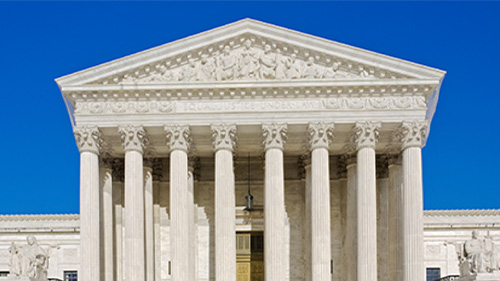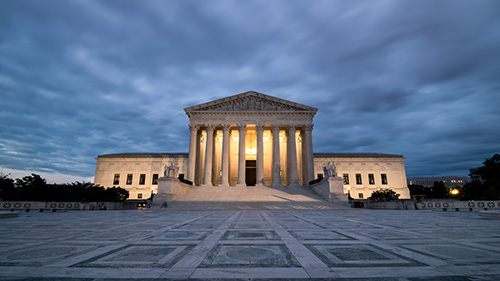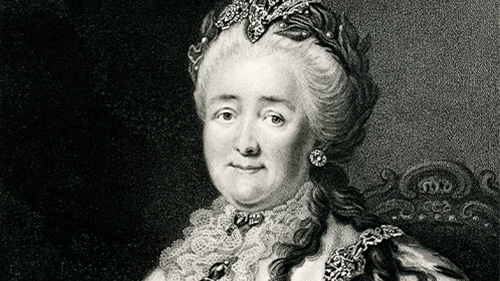From the Courtroom to the Classroom: Teaching Supreme Court Cases in AP U.S. History
One of the personal stories I frequently share with my students is how I nearly became a lawyer. I majored in political science and philosophy in...
AP & Honors Mathematics
Explore Wiley titles to support both AP and Honors mathematics instruction.
Literacy Skills & Intensive Reading
Connections: Reading – Grades 6–12
Empower student success with a proven intensive reading program that develops strong reading skills in striving readers.
Drama, Speech & Debate
Basic Drama Projects 10th Edition
Build students’ confidence and competence with comprehensive, project-based theatre instruction.
Literature
Connections: Literature
Support learners as they study dynamic, relevant texts and bring the richness of diverse voices to students through literature.
Literature & Thought
Develop critical thinking, reading, and writing across literacy themes, genres, historical eras, and current events.
Language Arts
Vocabu-Lit® – Grades 6–12
Help students build word power using high-quality contemporary and classic literature, nonfiction, essays, and more.
Connections: Writing & Language
Help students develop grammar, usage, mechanics, vocabulary, spelling, and writing and editing skills.
Reading/English Language Arts
Measuring Up to the English Language Arts Standards
Incorporate standards-driven teaching strategies to complement your ELA curriculum.
English Language Learners
Measuring Up for English Language Learners
Incorporate research-based best practices for ELLs with an approach that includes a focus on language acquisition strategies.
Mathematics
Measuring Up to the Mathematics Standards
Incorporate standards-driven teaching strategies to complement your mathematics curriculum.
Foundations
Measuring Up Foundations
Help students master foundational math skills that are critical for students to find academic success.
Science
Measuring Up to the Next Generation Science Standards
Give students comprehensive NGSS coverage while targeting instruction and providing rigorous standards practice.
Assessment
Measuring Up Live
Deliver innovative assessment and practice technology designed to offer data-driven instructional support.
For a better website experience, please confirm you are in:

The Supreme Court of the United States is often seen as the most distant and befuddling branch for my students. Whether it is misunderstanding their unelected status, difficulty in discerning legal language, or simply confusion about how the federal courts function, students are often left with a disjointed understanding of the role of the Supreme Court in the policymaking process. While students may be familiar with the Supreme Court justices individually, they often struggle to critically evaluate the Court as an institution.
The attached project allows students to make sense of the Supreme Court as a pillar of our democracy in the context of an ongoing case. I use this activity every school year, identifying one case that is particularly relevant to the lives of students. Relevance is the cornerstone of student learning.
Students will eagerly jump into the case, looking at case law, amicus curiae briefs, transcripts from the court, and prior judicial behavior to get into the minds of the justices. By asking students to predict how both the courts and individual justices will rule, students will better be able to arrive at how the court functions and how the circumstances of each justice help shape their judicial behavior.
Students also enjoy the competitive aspect of trying to accurately determine the behavior of the Court. For the 2021–2022 school year, I chose New York State Rifle & Pistol Association, Inc. v. Corlett, a case evaluating the 2nd Amendment and concealed carry permits. This was an easy decision as many students actively debate the issue of gun control. Another option for the 2021–2022 school year is Dobbs v. Jackson Women's Health Organization, a case recently granted certiorari which may have an impact on Roe v. Wade.
When teaching into this project, it may be important to model how to analyze judicial behavior. Whether it is taking excerpts from the transcript, observing past judicial behavior, or simply providing a background into the justices, this moment of direct instruction can go a long way to help students better understand how legal scholars make sense of the Supreme Court.
Prior to this project, I will spend multiple days on Miller, Heller, and McDonald to give students an appreciation for how the courts have evolved on gun rights. Special attention will need to be paid to the concept of selective incorporation and how it is applied to the states.
Ultimately, our goal is to better prepare our students for their lives as citizens in a complex democracy. This student-centered project allows students to evaluate challenging materials using an issue they care deeply about. While the outcome of the case is unsettled and is seen by some legal experts as quite predictable given the solid conservative majority, this still holds a relevance to the lives of students and should be a case taught in the upcoming school year.
Pat Sprinkle is a 13th year history teacher at the NYC Lab School for Collaborative Studies, teaching AP® U.S. History and AP® U.S. Politics and Government. Pat is a graduate of The Ohio State University and Columbia University. Pat has served as a member of the Teacher Advisory Council for the Bill and Melinda Gates Foundation, National Humanities Center, and the National Constitution Center. In addition, Pat was a 2013 James Madison Fellow along with a 2021 C-SPAN Fellow. Pat lives in Jersey City, New Jersey, with his wife, son (Franklin), and dog (Lyndon).

One of the personal stories I frequently share with my students is how I nearly became a lawyer. I majored in political science and philosophy in...

From speaking with students I’ve taught over the past ten years and interviews conducted by my student journalists about Deferred Action for...

One of the greatest rewards of teaching history is when students are able to show that they can think in a complex manner and recognize that history...
.jpg)
Happy Halloween week! For those wanting to sprinkle a little Halloween spirit into the classroom this week, the attached lesson plan uses the novel ...

The Supreme Court question on the AP Government exam, a mandatory component, consistently challenges students to demonstrate a nuanced understanding...

One of the most critical skills students will need on the AP® United States Government Exam is data literacy. Not only will there always be a...

Between 1607 and 1754, the British presence in North America vastly increased and there were more than 30 British colonies. Among those colonies were...

Something I think students with siblings might be able to relate to is competing with each other to please their parents or be the best. In some...

This lesson module can be used by regular or AP® World, U.S., or European History teachers to develop an understanding of how sport has been used as...

Many teachers consider the Document Based Question (DBQ) of the AP® European History Exam to be one of the more challenging aspects of the course....

For well over a millennium, Western Europe was unified by religious orthodoxy to the Roman Catholic Church. Although the church had been challenged...

Inflation is defined as a rise in the general level of prices over time. For some students, it can be difficult to comprehend unless they actually...
